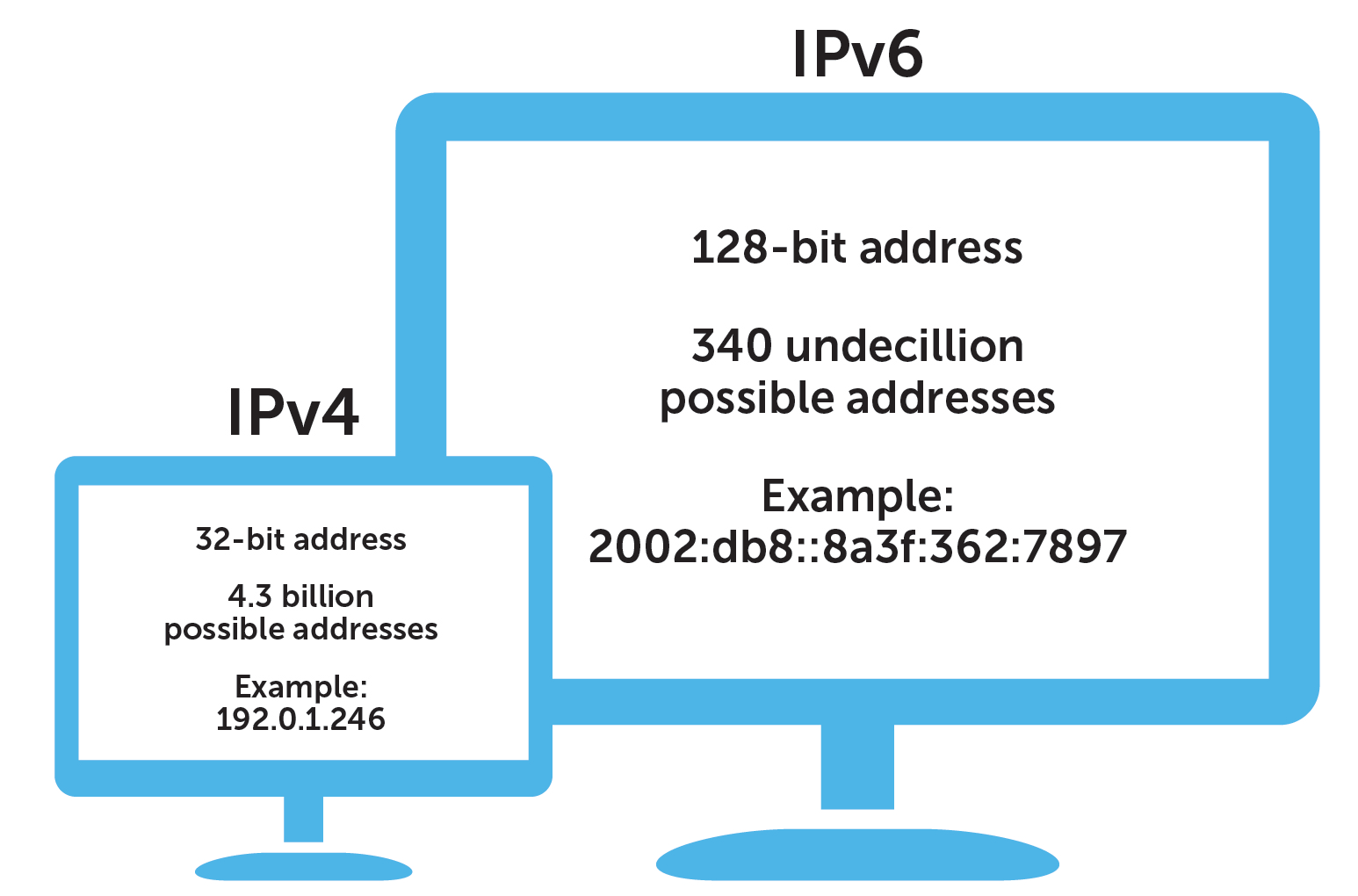Internet Protocol version 6 (IPv6) is the most recent version of the Internet Protocol (IP), the communications protocol that provides an identification and location system for computers and other network devices on the Internet. It is the successor to Internet Protocol version 4 (IPv4), the protocol most commonly used in data communication today. IPv6 was developed to provide additional addresses and improvements to the network layer security of the Internet.
IPv6 was designed to replace the previous version, IPv4, which exhausted its available addresses in 2011. IPv6 addresses are 128 bits long, compared to 32 bits used in the earlier IPv4 protocol. The extended address space provides for approximately 340 trillion trillion trillion (2^128) unique addresses, allowing for exponential growth in IP-enabled devices and services. IPv6 also provides optional features that are not present in IPv4, including support for more efficient network auto-configuration, better security, broader mobility capabilities, and a simplified header structure.
IPv6 is expected to be phase in over the next several years. The primary advantages of the transition to IPv6 are vastly improved scalability, enhanced authentication, and improved network security due to its inclusion of IPSec encryption. IPv6 is already in use in many parts of the world, including the US, Europe, and Japan.
Furthermore, there is ongoing work in the IETF to create secure IPv6 extensions, such as SEcure Neighbor Discovery (SEND), an extension to the Neighbor Discovery protocol that provides enhanced security features including cryptographic protections and secure address allocation. SEND is intended to address challenges associated with the current IPv6 addressing system, such as spoofing, anonymity, and malicious forwarding.
IPv6 has become the world’s primary Internet Protocol and its deployment continues to increase. Most major Internet service providers, corporate networks, and major operating systems now support IPv6 as the primary protocol for network communications. In order for organizations to be able to take full advantage of IPv6, they must also ensure their Internet-facing systems are IPv6-enabled.






